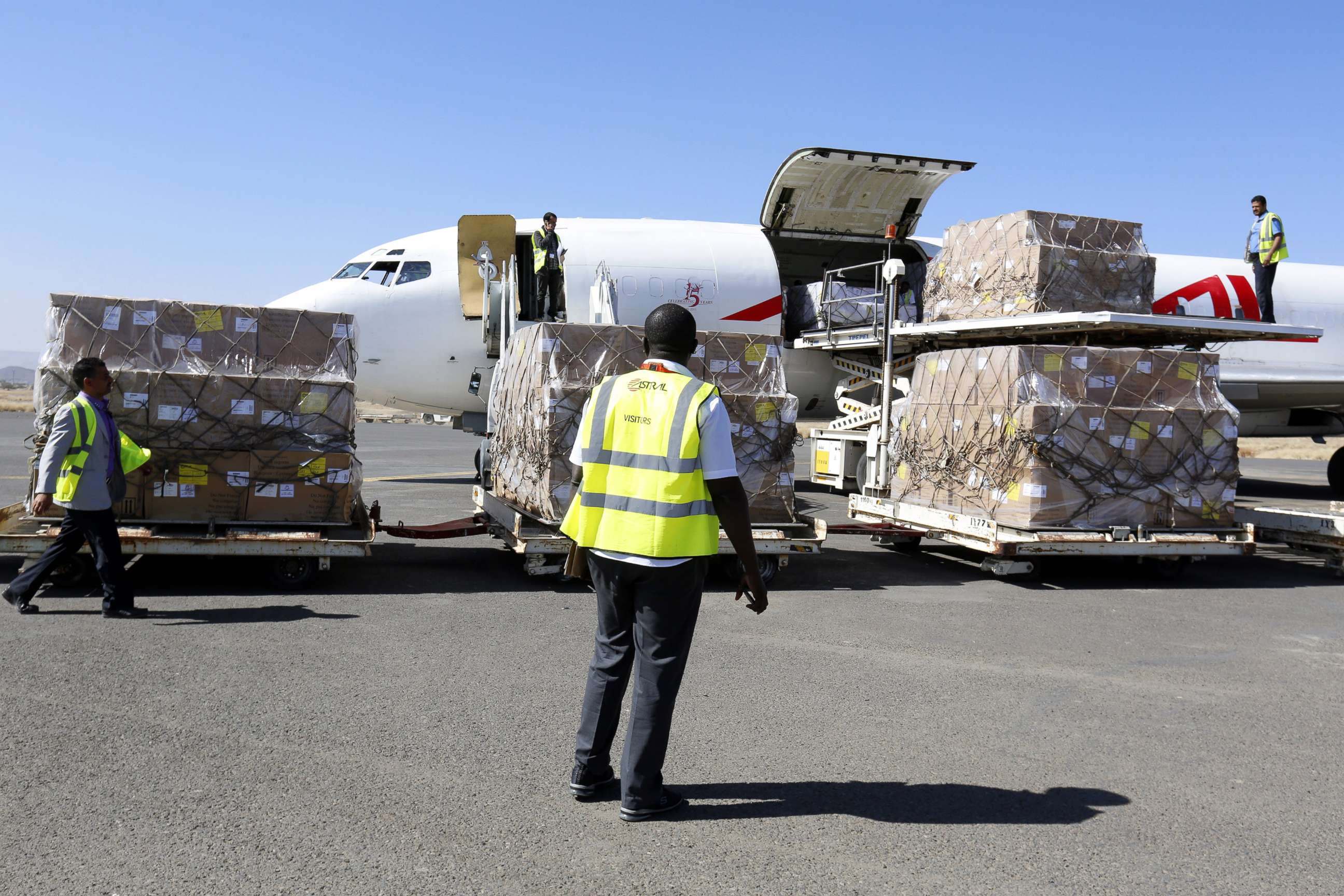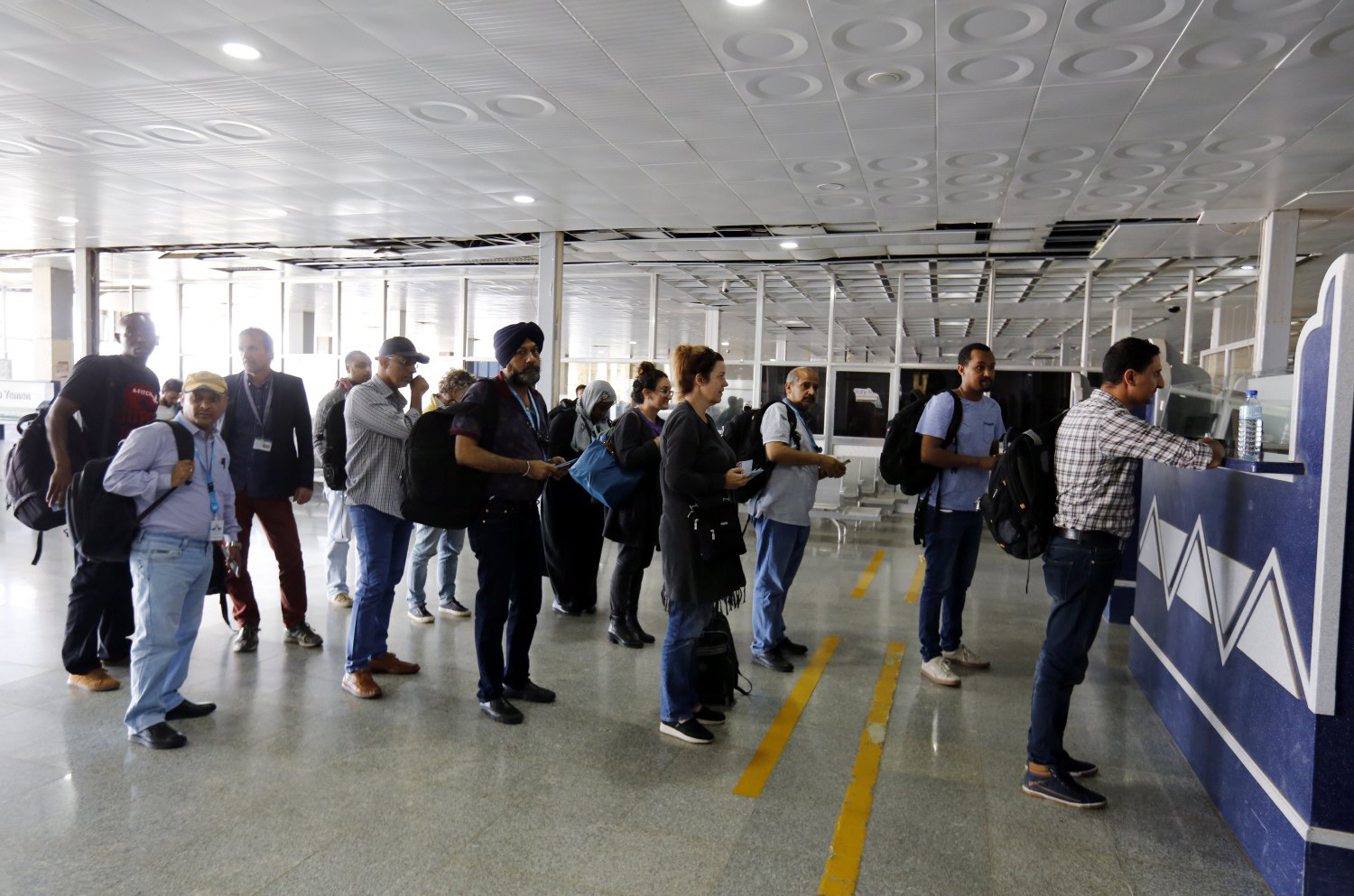Aid reaches Yemen as blockade eases, but shipments still few
The United Nations’ food assistance program said the flow was far from ideal.
— -- A ship and planeloads of aid have reached Yemen in recent days after a Saudi-led closure on the war-torn country eased, but after weeks of blocked shipments, the United Nations’ food assistance program said the flow was far from ideal.
After almost three weeks of blocking access to the country through by land, sea or air, the Saudi-led coalition fighting Yemeni rebels over the weekend allowed several aid flights to land at the international airport in Yemen’s capital, Sanaa, and today, a ship with food aid docked at a port on the country’s Red Sea coast, according to the U.N.'s World Food Programme.
Humanitarian agencies had for weeks warned that vital food and medicine supplies for much of Yemen’s population would soon run out if the blockade were not lifted. It was tightened on Nov. 6, after a missile attack hit the Saudi capital; Houthi rebels in Yemen claimed responsibility for the Nov. 4 strike.
From Saturday through today, the Saudi-led coalition, which controls the country’s airspace, allowed two U.N. passenger flights to land each day, WFP’s Yemen country director, Stephen Anderson, told ABC News.
The coalition also let a cargo flight carrying humanitarian aid land on Saturday and another cargo flight with 18 metric tons of medical cargo land today, and a third -- with twice as much medical aid -- is expected to arrive Tuesday, Anderson said. The World Health Organization said that 1,000 vials of anti-toxins for diphtheria were among today's shipment.

At the Red Sea port of Saleef, controlled by Houthi rebels, a ship bearing humanitarian aid was allowed to dock today for the first time in weeks, according to Anderson. The WFP-chartered ship, with 25,000 tons of wheat aboard, arrived last night but was hampered by heavy winds, he said.
The ship’s cargo will be able to feed 1.8 million Yemenis for a month, Anderson said.
While humanitarian aid is beginning to enter the country again, the WFP is also concerned about ensuring commercial cargo -- particularly food and fuel -- gets through, he said. A ship with 5,500 tons of commercial wheat flour arrived on Sunday, and two others with sugar and soy were about to dock, but it is unclear whether the flow would continue unhampered, according to Anderson.
Nearly all of the country’s food is imported, three-quarters of it through Saleef and the nearby port of Hodeidah, according to Anderson.
While aid groups have targeted the most vulnerable Yemenis -- the WFP provides assistance to a quarter of the country’s 28 million people -- a large percentage of the population must seek other sources for sustenance.

“There are many others who we’re not assisting,” Anderson said via phone from Sanaa. “They rely on the markets for their food and for other necessities, and if there’s a disruption in the supply line of commercial food, this can impact them directly.”
The United Nations and a number of international humanitarian groups said this month that “three years of fighting have left over 20 million people in need of assistance” -- including seven million “on the brink of famine.”
The aid agency Save the Children said Friday that, every month, there were approximately 20,000 new cases of severely malnourished children under 5 years old.
“It’s critical that shipments of commercial food continue,” Anderson said, “and it’s also essential that humanitarian supplies are able to flow without delays.”




